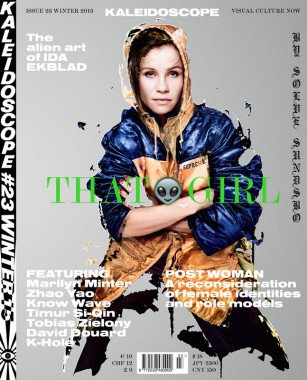
KALEIDOSCOPE Magazine 23, Winter 2015
Softcover, 272 pp., offset 4/4, 230 x 300 mm
English edition
ISSN 2038-4807
Published by KALEIDOSCOPE Press
$18.00 ·
Welcome to Kaleidoscope’s #23 (Winter 2015). Following the recent, successful redesign by Bureau Mirko Borsche, we are back with a brand new issue. The new formula is taking shape, new columnists and contributors are joining our ranks, and a lot of enthusiastic research went into curating the most compelling content out there.
In the opening section of HIGHLIGHTS, twelve profiles account for the best of the season: JASON MATTHEW LEE (by Alexander Shulan), DANIEL BAUMANN (by Aoife Rosenmeyer), MARYLIN MINTER (by Gianni Jetzer), MAGALI REUS (by Ruba Katrib), KNOW WAVE RADIO (by Alexandre Stipanovich), BEATRICE GIBSON (by George Vasey), CATHERINE AHEARN (by Tobias Czudej), K-HOLE (by Kevin McGarry), JAMIAN JULIANO-VILLANI (by Joshua Abelow), ALESSANDRO BAVA (by Francesco Garutti), ZHAO YAO (by Venus Lau), and IDEA BOOKS (by Xerxes Cook).
At a time when feminism resurges both in critical discourse and media headlines, while at the same time entering a list of words overdue to be banned, our signature MAIN THEME section is devoted to a reconsideration of female identities and role models. POST WOMAN is composed of a think tank, a think piece by Natasha Stagg and five interviews, including with Juliana Huxtable (by Andrew Durbin), Amalia Ulman (by Francesca Gavin), Judith Bernstein (by Hanne Mugaas), Massimiliano Gioni on “La Mamma” (with Pietro Rigolo), and Girls Like Us (by Felix Burrichter).
To follow, this issue’s MONO section and cover story are dedicated to Norwegian artist IDA EKBLAD. Fueled by an outright marvel for this thing called art, her work is distinguished by an extreme degree of impatience and prolificness. Her shift and turns are the result of a feverish engagement with pure materiality, synthesized with popular culture and animated by alien transformations. This definitive monographic survey comprises an essay by Peter J. Amdam, an interview by Cory Arcangel and an original portrait by Sølve Sundsbø.
Later on, the VISIONS section invites the eye to an enthralling journey across almost 100 pages of visual contributions by artists, curators and image-makers, including: TOBIAS ZIELONY, “Jenny Jenny”; MR.; “Chicago”: BARBARA CRANE and TONY LEWIS; DAVID DOUARD in Los Angeles; JONAS WOOD; “Alliantecnik,” curated by Alessio Ascari; TIMUR SI-QIN, “Premier Machinic Funerary”; and GRAHAM LITTLE.
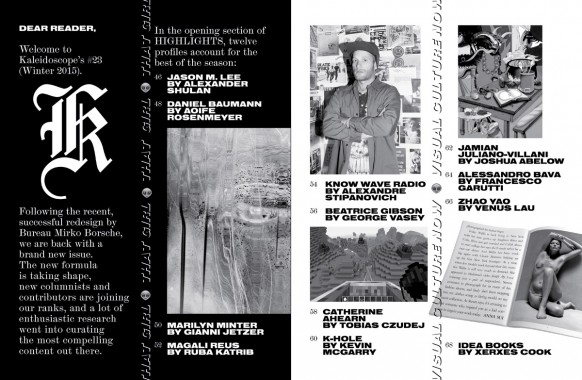
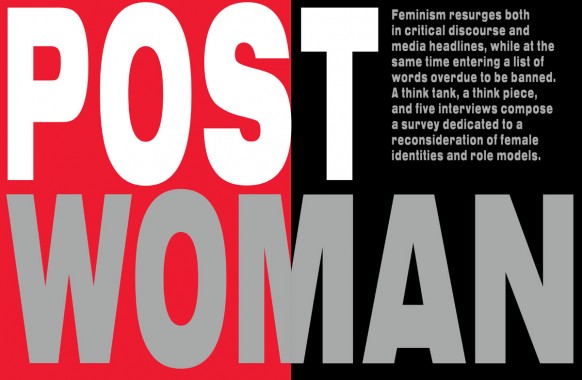
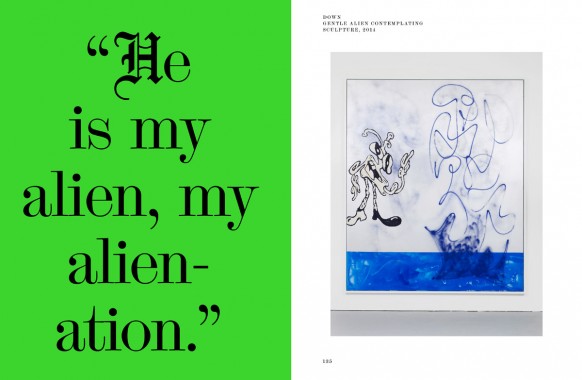
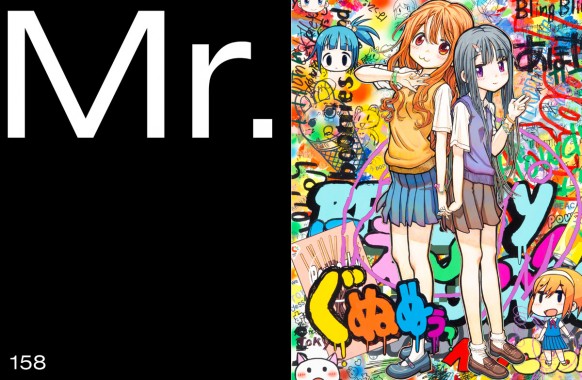
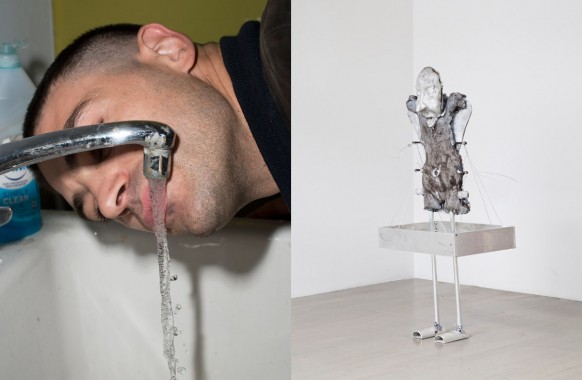
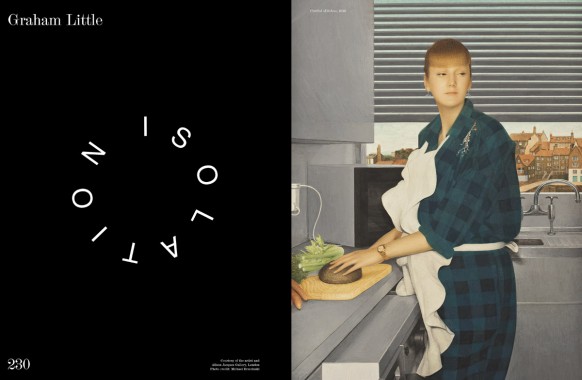
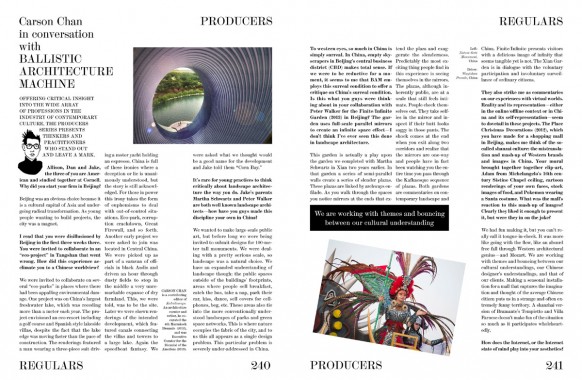
Alessandro Bava, Alessio Ascari, Alexander Shulan, Alexandre Stipanovich, Amalia Ulman, Andrew Durbin, Aoife Rosenmeyer, Art, Barbara Crane, Beatrice Gibson, Catherine Ahearn, Cory Arcangel, Culture, Daniel Baumann, David Douard, Distribution, Felix Burrichter, Francesca Gavin, Francesco Garutti, George Vasey, Gianni Jetzer, Graham Little, Hanne Mugaas, Ida Ekblad, Idea Books, Jamian Juliano-Villani, Jason Matthew Lee, Jonas Wood, Joshua Abelow, Judith Bernstein, Juliana Huxtable, KALEIDOSCOPE Press, Kevin McGarry, Magali Reus, Marilyn Minter, Massimiliano Gioni, Mirko Borsche, Natasha Stagg, Peter J Amdam, Pietro Rigolo, Ruba Katrib, Sølve Sundsbø, Timur Si-Qin, Tobias Czudeji, Tobias Zielony, Tony Lewis, Venus Lau, Xerxes Cook, Zhao Yao
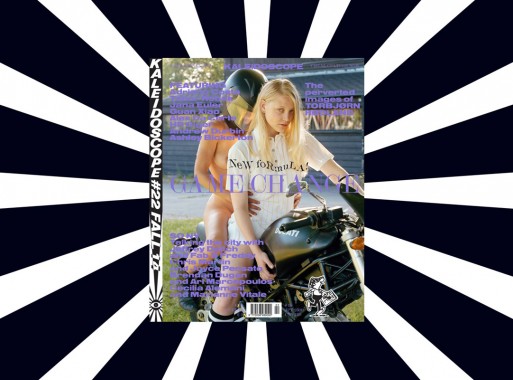
KALEIDOSCOPE Magazine 22, Fall 2014
Softcover, 256 pp. + Ari Marcopoulos poster, offset 4/4, 230 x 300 mm
English edition
ISSN 2038-4807
Published by KALEIDOSCOPE Press
$18.00 ·
Kaleidoscope’s newest release, Issue 22 (Fall 2014), introduces a completely redesigned and revamped version of the magazine, under the visionary art direction of Munich-based Bureau Mirko Borsche. The magazine’s new direction combines its defining curatorial and interdisciplinary approach with an emphasis on the power of images and a keen attention to the update, and is best epitomized by the new cover tagline: VISUAL CULTURE NOW.
In the renovated opening section of HIGHLIGHTS, twelve profiles account for the best of the season: Boychild (by Francesca Gavin), Ed Fornieles (by George Vasey), Adriano Costa (by Laura McLean-Ferris), Liu Chuang (by Venus Lau), Carol Rama (by Jesi Khadivi), Tabor Robak (by Alex Gartenfeld), Jana Euler (by Martha Kirszenbaum), Guan Xiao (by Pablo Larios), Alex Da Corte (by Piper Marshall), David Ostrowski (by Peter J. Amdam), Aphex Twin (by Francesco Tenaglia), and Torey Thornton (by Ross Simonini).
To follow, our signature MAIN THEME section, titled SO NY, is dedicated to practices informed and inspired by the city of New York. From the gritty urban feeling to the great sense of community — living and working in NYC provides endless inspiration and fuel for artists and creators. We have selected four pairs, from different generations and circles, to share memories and discuss perspectives: Jeffrey Deitch and Fab 5 Freddy, Chris Martin and Joyce Pensato, Brendan Dugan and Ari Marcopoulos, and Cecilia Alemani and Marianne Vitale. The result is a choral tale of convergences, strategies, connections, and old and new magics. Enriched with a collectable poster by Ari Marcopoulos!
On the other hand, the MONO section and cover story are dedicated to Norwegian, Los Angeles-based photographer Torbjørn Rødland. Seemingly speaking the fetishistic idiom of advertisement, marketing and food photography, Rødland’s images are in fact pervaded by the most compelling kind of perversity and haunted by boredom, spiritual longing, and a sense of aftermath. This monographic survey comprises an essay by Chris Sharp, an interview by Hanne Mugaas, and original portraits by Trine Hisdal.
Later on, a brand new section invites the eye to an enthralling journey across over 80 pages of visual contributions by artists, curators and image-makers, affirming the magazine’s centrality as a tool to show and experience art. This issue’s VISIONS include “Chopped & Screwed: Austin Lee and David Benjamin Sherry,” curated by Alessio Ascari; H.R. Giger’s “Biomechanoid”; Dorothea Tanning’s “Paintings”; Alexandra Bachzetsis’s “From A to B via C”; “Rondes Bosses,” curated by Nicolas Trembley; Chris Wiley’s “Technical Compositions”; and David Rappeneau’s “$$$$$$$$$$$$$$$$$$$$$$$$$$$.”
Lastly, the closing section of REGULARS features our insightful columns on the past, present and future of art and culture: in the first installment of Futura 89+ Hans Ulrich Obrist and Simon Castets interview American poet Andrew Durbin; Producers features Carson Chan’s conversation with Artsy’s founder Carter Cleveland; Christopher Schreck explores Francesco Clemente’s India as part of the Panorama series; and in Pioneers Fredi Fischli and Niels Olsen talk to legendary artist Ashley Bickerton.
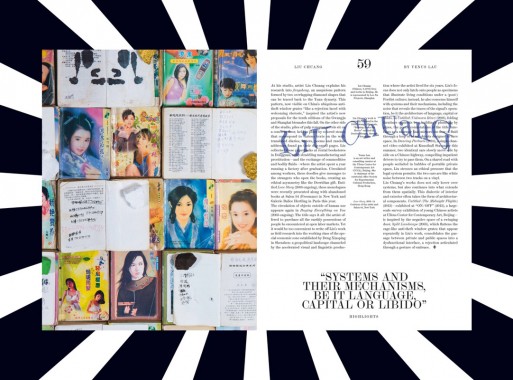
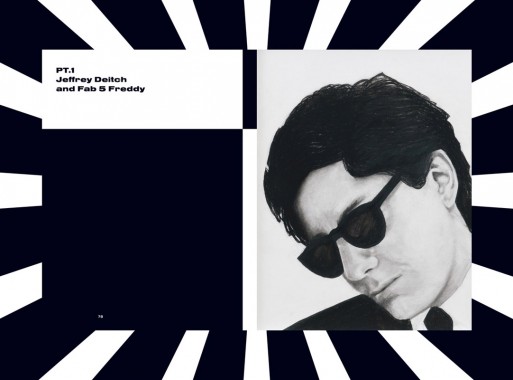
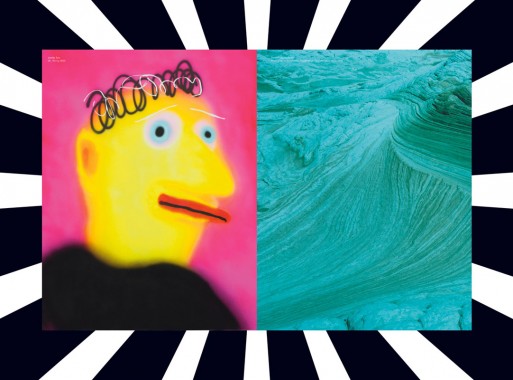
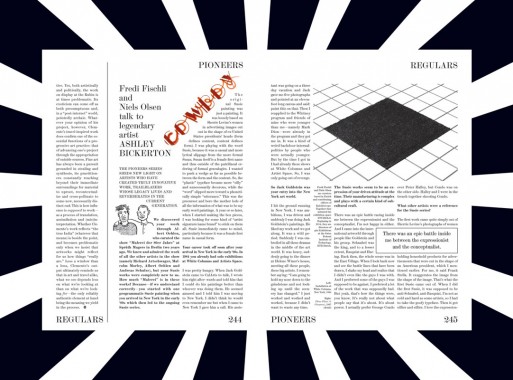
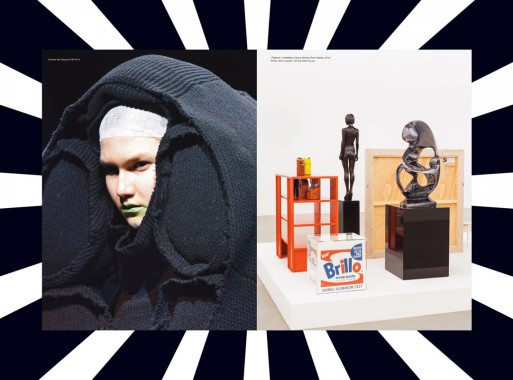
Adriano Costa, Alessio Ascari, Alex Da Corte, Alex Gartenfeld, Alexandra Bachzetsis, Andrew Durbin, Aphex Twin, Ari Marcopoulos, Art, Ashley Bickerton, Austin Lee, Brendan Dugan, Carol Rama, Carson Chan, Carter Cleveland, Cecilia Alemani, Chris Martin, Chris Sharp, Chris Wiley, Christopher Schreck, Culture, David Benjamin Sherry, David Ostrowski, David Rappeneau, Distribution, Dorothea Tanning, Ed Fornieles, Fab 5 Freddy, Francesca Gavin, Francesco Clemente, Francesco Tenaglia, Fredi Fischli, George Vasey, Guan Xiao, H.R. Giger, Hanne Mugaas, Hans Ulrich Obrist, Jana Euler, Jeffrey Deitch, Jesi Khadivi, Joyce Pensato, KALEIDOSCOPE Press, Laura McLean-Ferris, Liu Chuang, Marianne Vitale, Martha Kirszenbaum, Mirko Borsche, Nicolas Trembley, Niels Olsen, Pablo Larios, Peter J Amdam, Piper Marshall, Ross Simonini, Simon Castets, Tabor Robak, Torbjørn Rødland, Torey Thornton, Trine Hisdal, Venus Lau
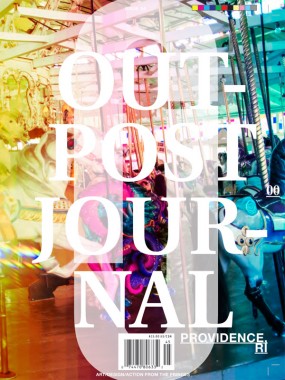
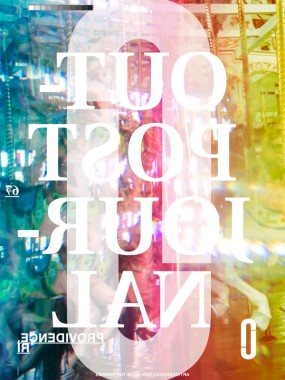
Outpost Journal 4, Providence
Softcover, 64 pp. + insert, offset 4/4, 9 x 12 inches
Edition of 500
ISBN 978-0-9836082-2-6
Published by Outpost Journal
$15.00 ·
Outpost is an annual print publication on art, design and community action from cities that have been traditionally underexposed beyond their local contexts. Each beautifully produced and visually engaging issue of Outpost focuses on a single urban location and comes packaged with a limited edition print by an artist from the featured city. Outpost is a journey into the creative heart of a place, and via features like “Secretly Famous” (profiles of the most infamous artsy locals), guerrilla engagements with tourist attractions, historical explorations, mapping projects, and deep dives into artist collectives and organizations, Outpost exposes the myriad ways in which unique local communities arise through creative collaboration and production.
Exploratory and playful, critical with a sense of levity, and inspired by hand-drawn maps, flags, totem poles, poorly pixelated iPhone photos, moody landscapes, and the spirit of adventure, Outpost is dedicated to strengthening ties between communities and spreading new ideas about how creative culture can change our world.
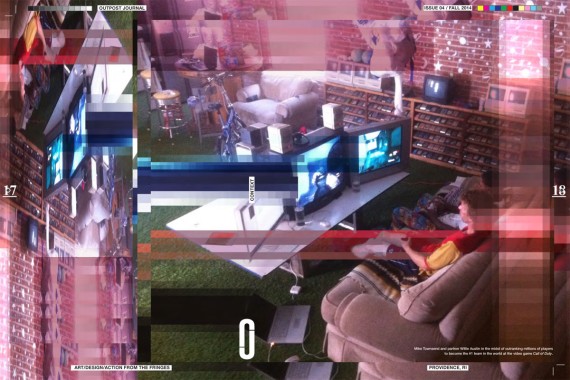
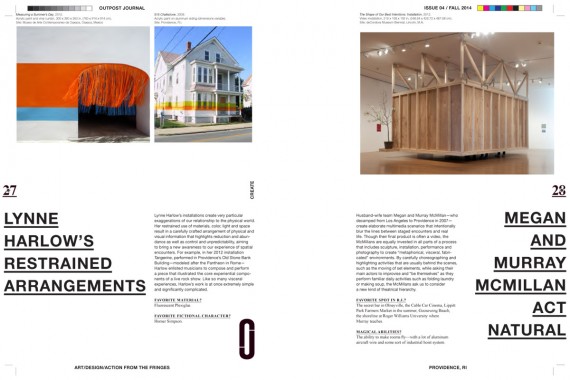
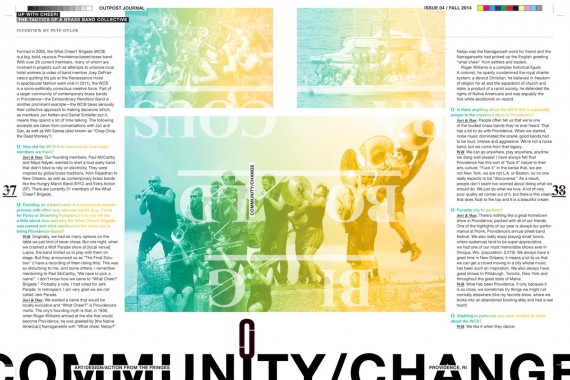
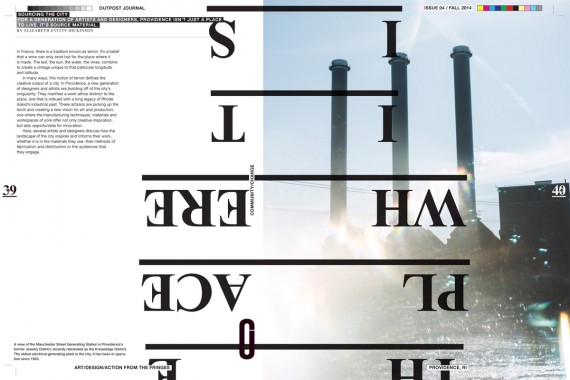
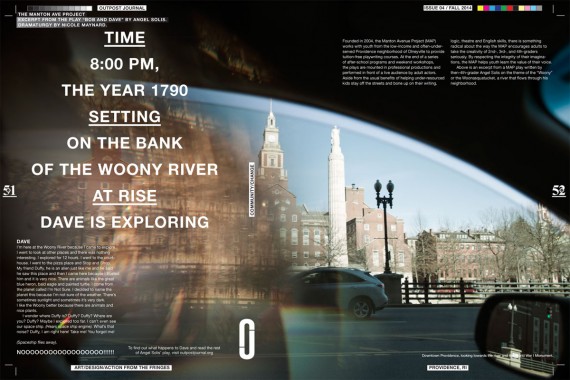
Aja Blanc, Alex Kwartler, Annie Fischer, Anusha Venkataraman, Architecture, Art, Brian Chippendale, Clay Rockefeller, Culture, Dale Gowen, Distribution, Elizabeth Evitts Dickinson, Eric Shiner, Jay Peter Salvas, Jungil Hong, Luke Baker, Manya Rubinstein, Matthew Williams, Mike Taylor, Outpost Journal, Pete Oyler, Sheri Pasquarella, Victoria Kung
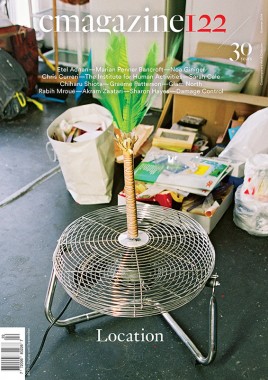
C Magazine 122, Location
Softcover, 72 pp., offset 4/1, 210 x 295 mm
Edition of 2200
ISSN 1480-5472
Published by C Magazine
$7.50 ·
C Magazine 122 includes features on Being in a State of Pure Belief: On the Work of Etel Adnanby Corrine Fitzpatrick, Willow, Weep for Me: Noa Giniger, Marian Penner Bancroft, and the Intricacies of Melancholy by Kimberly Phillips, Renzo Martens and the Institute for Human Activities by Nicholas Brown, Both Here and There: Canadian Artists and the Berlin Experience by Alexandra Phillips; plus Stopover, an Artist Project by Alexis Bhagat & Stephanie Loveless, and our regular sections On Writing, Exhibition Reviews, Book Reviews, and Artefact.
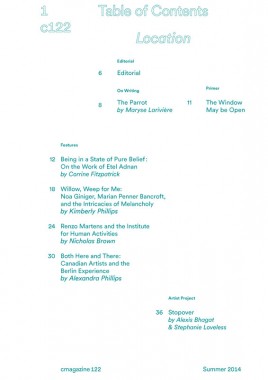
Alexandra Phillips, Alexis Bhagat, Art, C Magazine, Corrine Fitzpatrick, Culture, Distribution, Etel Adnanby, Kimberly Phillips, Marian Penner Bancroft, Nicholas Brown, Renzo Martens, Stephanie Loveless
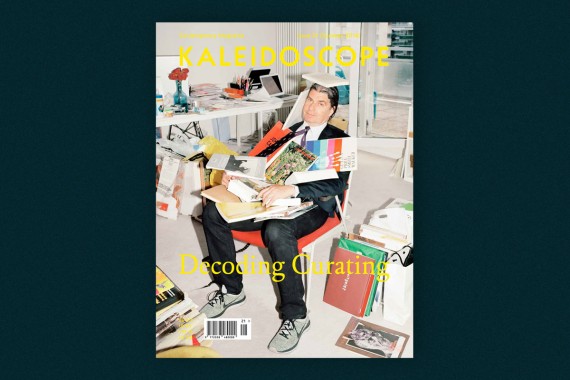
KALEIDOSCOPE Magazine 21, Decoding Curating
Softcover, 234 pp. + three special inserts, offset 4/4, 220 x 287 mm
English edition
ISSN 2038-4807
Published by KALEIDOSCOPE Press
$18.00 ·
KALEIDOSCOPE’s newest issue, Issue 21 (Summer 2014), is a special edition dedicated to curating, aimed to decode the dynamics and implications of the profession — from funding to theoretical propositions, from circulation to consciousness-raising and from trend forecasting to commodification — and imagine its possible future developments.
In the opening section of HIGHLIGHTS, we have selected five emerging, ’80s-born practitioners from different backgrounds and continents — Alex Gartenfeld, Sarah Rifky, Hanne Mugaas, Anthony Yung and Luca Lo Pinto — representing a glimpse into the multiplicity of visions and motivations behind, as well as approaches to, the curatorial practice.
To follow, the MAIN THEME section comprises four extensive discussions, involving as many as twenty-five international professionals — including Adam Szymczyk, Sarah McCrory, Lauren Cornell, Dena Yago and Mitchell Algus — to comment on how curating unfolds in such diverse frameworks as the not-for-profit organization, the large-scale exhibition, the Internet, and the commercial gallery.
Surprisingly, on the other hand, the MONO section and cover story are dedicated to an artist, Swiss living legend John Armleder — with a comprehensive interview by Andrea Bellini, an essay by Jeanne Graff and a portrait by Mathilde Agius — as a means to account for an organic and unconstrained approach to all sides of creative production and to hint at the long and enthralling tradition, of Duchampian descent, of artist/curators.
Lastly, the closing section of REGULARS features interviews exploring to what extent curatorial practice has strayed into other fields, such as architecture, cuisine and radio broadcasting: Hans Ulrich Obrist interviews NTS founder Femi Adeyemi; Fredi Fischli and Niels Olsen talk appropriating exhibitions with cult curator Bob Nickas; Jesi Khadivi discusses the art scene in L.A. with man-about-town Michael Ned Holte; Carson Chan meets Venice Architecture Biennale’s key contributor Stephan Trüby; and Francesca Gavin interrogates editor Emma Robertson and promoter Alessandro Porcelli on the art of food.
This issue is enriched by our seasonal TIPS on reading, listening, stopping by, meeting and visiting; as well as three visual INSERTS, specially commissioned as so many experiments of exhibitions on paper: “Portraits of Society” curated by Nicholas Cullinan, ”Robert Mapplethorpe” curated by Elad Lassry, and “Coupling” curated by Piper Marshall.
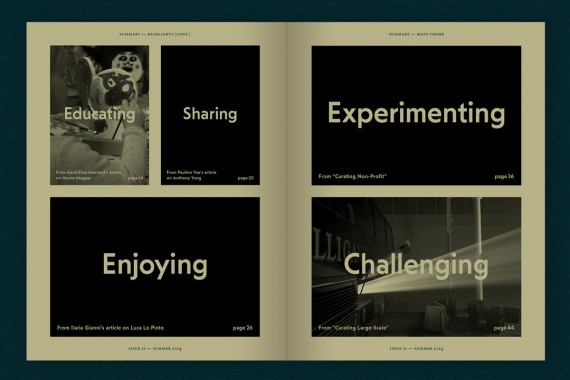
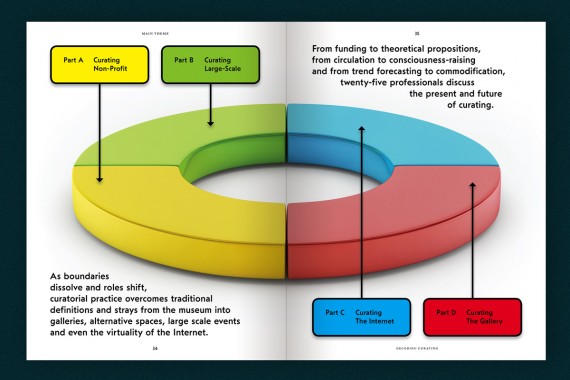
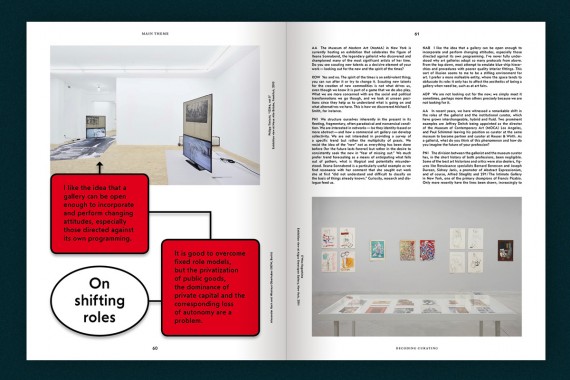
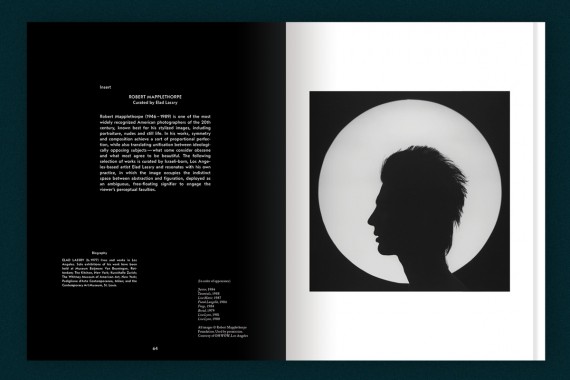
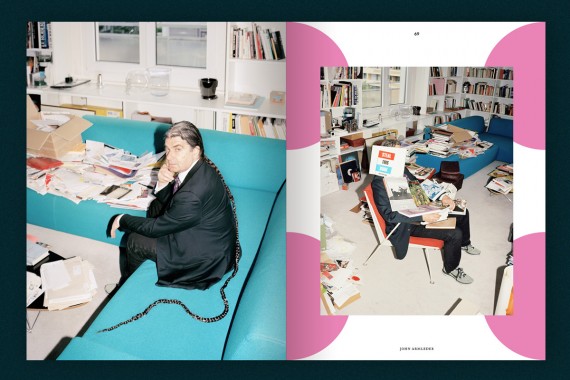
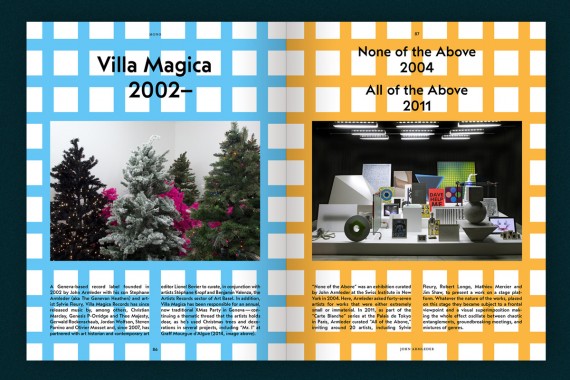
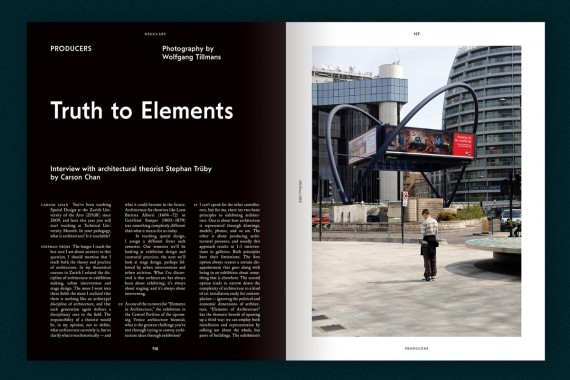
Adam Szymczyk, Alessandro Porcelli, Alex Gartenfeld, Andrea Bellini, Anthony Yung, Art, Bob Nickas, Carson Chan, Culture, Curatorial, Dena Yago, Distribution, Elad Lassry, Emma Robertson, Femi Adeyemi, Francesca Gavin, Fredi Fischli, Hanne Mugaas, Hans Ulrich Obrist, Jeanne Graff, Jesi Khadivi, John Armleder, KALEIDOSCOPE Press, Lauren Cornell, Luca Lo Pinto, Mathilde Agius, Michael Ned Holte, Mitchell Algus, Nicholas Cullinan, Niels Olsen, Piper Marshall, Robert Mapplethorpe, Sarah McCrory, Sarah Rifky, Stephan Trüby
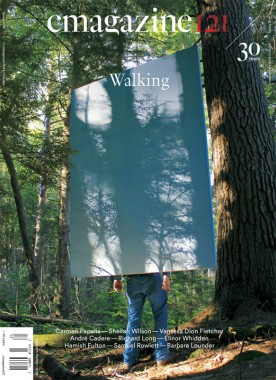
C Magazine 121, Walking
Softcover, 80 pp., offset 4/1, 210 x 295 mm
Edition of 2200
ISSN 1480-5472
Published by C Magazine
$7.50 ·
C Magazine Issue 121 “Walking” includes features “On Speculative Walking: From the Peripatetic to the Peristaltic” by Randy Lee Cutler, “Walking Transformed: The Dialogics of Art & Walking” by Simon Pope, “Sissy Boys on YouTube: Notes Towards a Cultural History of Online Queer Childhood” by Jon Davies, “The Walk Exchange: Pedagogy and Pedestrianism” an Interview with Moira Williams by Earl Miller and “Walking with Artists” edited by Eugenia Kisin and Amish Morrell; plus an artist project by Sheilah Wilson with text by Stephen Horne, and our regular sections On Writing, Exhibition Reviews, Book Reviews and Artefact.
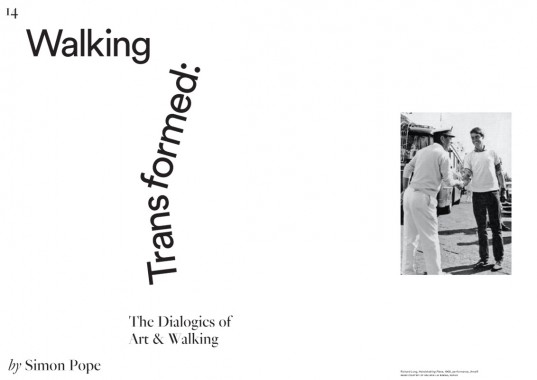
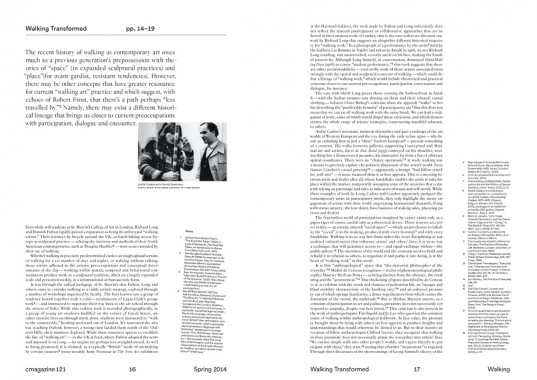
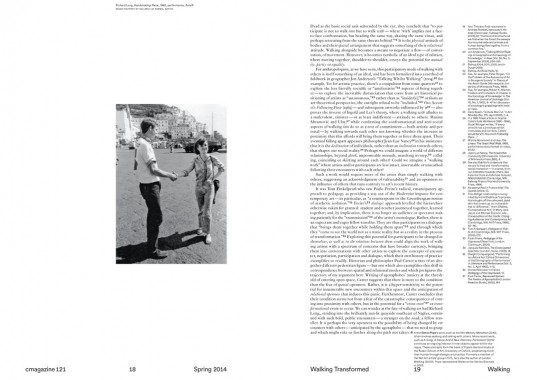
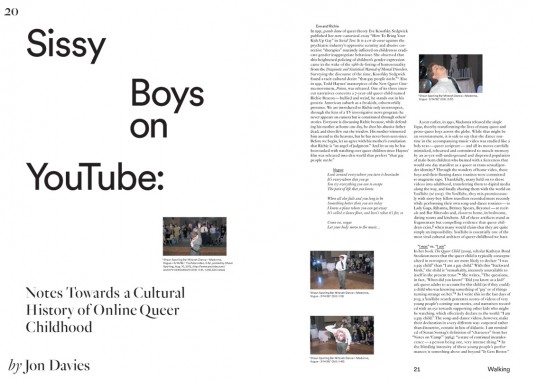
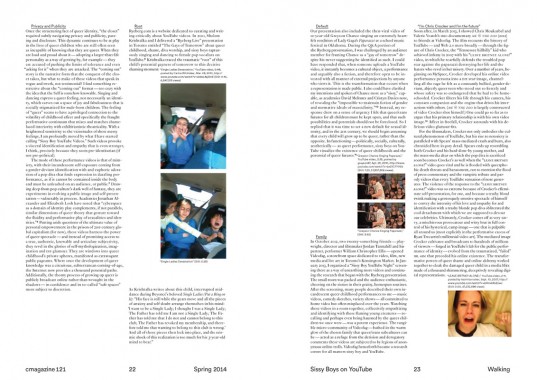
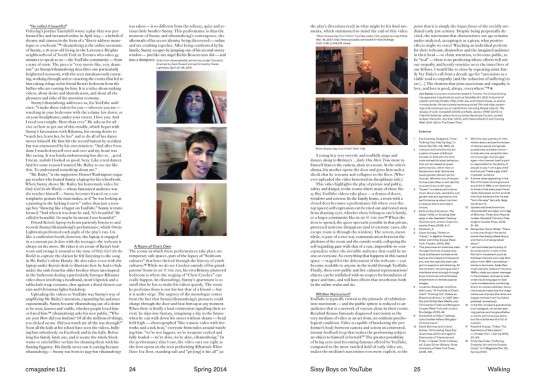
Amish Morrell, Art, C Magazine, Culture, Earl Miller, Eugenia Kisin, Jon Davies, Moira Williams, Randy Lee Cutler, Sheilah Wilson, Simon Pope, Stephen Horne
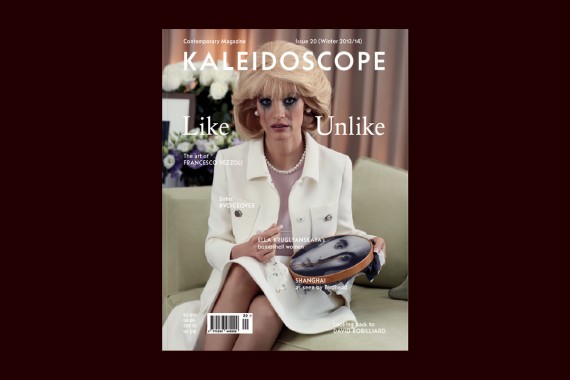
KALEIDOSCOPE Magazine 20 — Winter 2014
Softcover, 242 pp. + three special inserts, offset 4/4, 220 x 287 mm
English edition
ISSN 2038-4807
Published by KALEIDOSCOPE Press
$18.00 ·
The opening section of HIGHLIGHTS features Latvian-born painter Ella Kruglyanskaya (words by Chris Sharp); Danish performer Christian Falsnaes (interview by Raimar Stange); American painter Ned Vena (words by Mathieu Malouf); British artist Haroon Mirza (interview by Thom O’Nions); and Berlin-based Loretta Fahrenholtz (words by Michele D’Aurizio).
Edited by Kaleidoscope’s editor-in-chief Alessio Ascari and entitled #VOICEOVER, the MAIN THEME section is dedicated to the deployment of off-camera commentary as a conceptual device in moving image works. The survey presents an overview by Shama Khanna on a new generation of artists, including Ed Atkins, Camille Henrot, Pilvi Takala, Duncan Campbell and Laure Prouvost; a case study by Pablo Larios on Jordan Wolfson; an essay by Marie de Brugerolle on French filmmakers Chris Marker and Jean-Luc Godard; and a conversation between Oliver Laric and George Vasey on voiceover in the pop realm.
Riding the edge of contemporary art and show business, the controversial work of Francesco Vezzoli, our cover story and the subject of the MONO section, occupies a schizophrenic space between pop and conceptualism, high and low, cynicism and criticality. The section comprises an essay by Andrea Viliani, an interview by Kevin McGarry, and a visual project specially created by the artist based on Grindr profiles.
A selection of videos featured in the Mono and Main Theme sections will be soon available to watch on KALEIDOSCOPE Videoclub, our new online channel of video exhibitions. Stay tuned!
Lastly, this issue’s section of REGULARS features Hans Ulrich Obrist introducing Swiss artist Kaspar Müller; Carson Chan meeting young global curator Simon Castets; Davide Quadrio reporting on the art scene in Shanghai, in conversation with local duo Birdhead; Fredi Fischli and Niels Olsen rediscovering the art of Chicago artist Christina Ramberg in conversation with Albert Oehlen; and Matthew Erickson inaugurating a new series of articles focused on single art works, Close-up, with an in-depth look at Matthew Barney’s latest project, River of Fundament.
The issue is enriched by our seasonal TIPS on following, reading, listening, stopping by, meeting and visiting; as well as by three SPECIAL INSERTS by Belgian collective Leo Gabin, British maverick David Robilliard and Japanese legendary illustrator Hajime Sorayama.
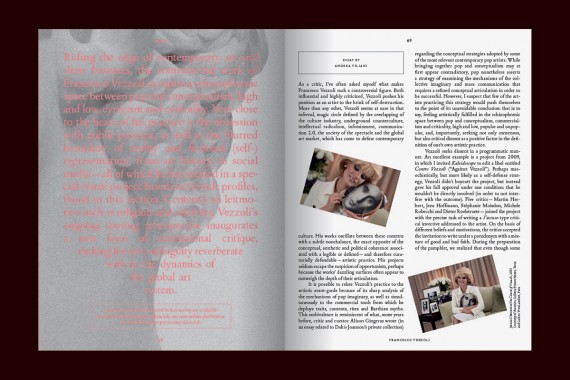
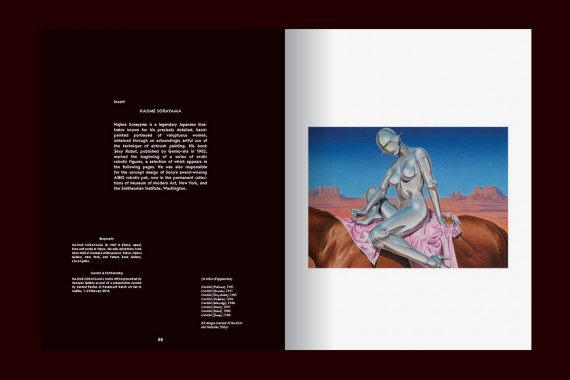
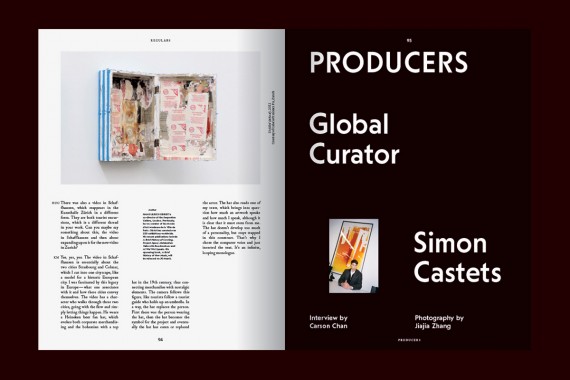
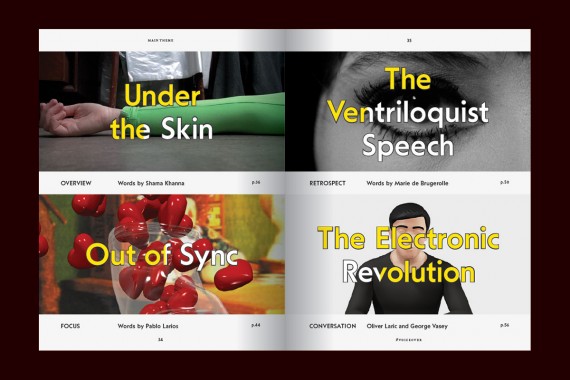
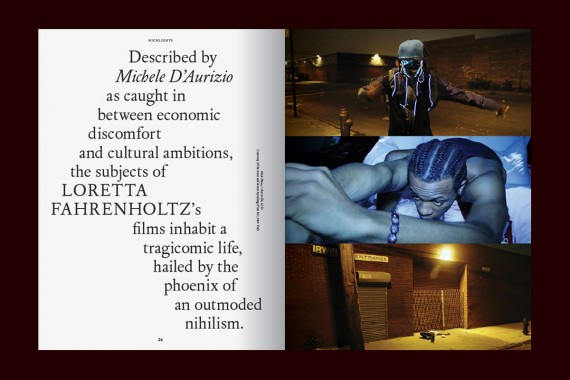

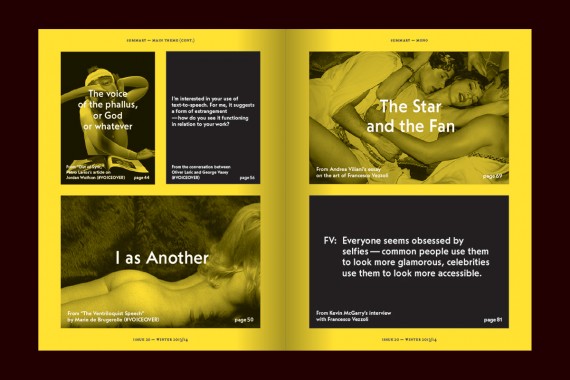
Albert Oehlen, Alessio Ascari, Andrea Viliani, Art, Camille Henrot, Carson Chan, Chris Marker, Christian Falsnaes, Christina Ramberg, David Robilliard, Distribution, Duncan Campbell, Ed Atkins, Ella Kruglyanskaya, Francesco Vezzoli, Fredi Fischli, George Vasey, Hajime Sorayama, Hans Ulrich Obrist, Haroon Mirza, Jean-Luc Godard, Jordan Wolfson, KALEIDOSCOPE Press, Kaspar Müller, Kevin McGarry, Laure Prouvost, Loretta Fahrenholtz, Marie de Brugerolle, Mathieu Malouf, Matthew Barney, Matthew Erickson, Michele D'Aurizio, Ned Vena, Niels Olsen, Oliver Laric, Pablo Larios, Pilvi Takala, Raimar Stange, Shama Khanna, Simon Castets, Thom O'Nions
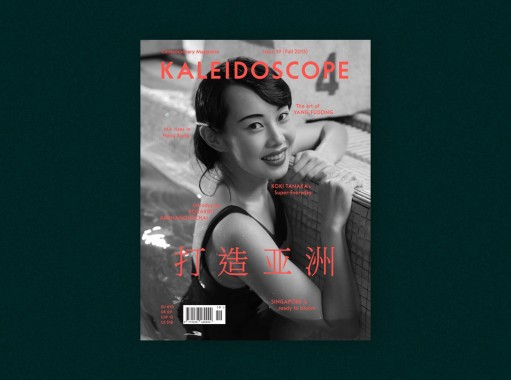
KALEIDOSCOPE Magazine 19 — Fall 2013
Softcover, 242 pp. + three special inserts, offset 4/4, 220 x 287 mm
English edition
ISSN 2038-4807
Published by KALEIDOSCOPE Press
$18.00 ·
KALEIDOSCOPE issue 19 (Fall 2013), is a special edition dedicated to contemporary art and culture produced in the Asia Pacific region. The release of this special edition — the first product of an ongoing investigation, evidencing KALEIDOSCOPE’s commitment towards establishing a presence in Asia — will be celebrated with a series of international launches and will inaugurate, in addition to the standard international circulation of the magazine, an extended distribution in Asian countries.
The opening section of HIGHLIGHTS features: LA-based Japanese artist Koki Tanaka, who pursues the Super-Everyday to find beauty in the ordinary, as explained by Miwako Tezuka; Chinese artist Li Ran, framed by Ho Rui An as attempting to get over the “postcolonial hangover”; Basir Mahmood, who directs his pragmatist gaze upon what Gemma Sharpe describes as the sociological imperatives of Pakistan’s urban life; Korean New Zealand artist Seung Yul Oh, whose practice is read by Emma Bugden as blurring the lines of art and play; and Filipino artist Maria Taniguchi, whose patterns and repetitions are, according to Joselina Cruz, elements of her latent archeology.
Evocatively titled The Making of Asia, the MAIN THEME section discusses the creation and diffusion of local narratives in the Asia Pacific region: editor-in-chief Alessio Ascari interviews Lars Nittve, the director of Hong Kong’s megamuseum M+; art duo Desire Machine Collective talk to Shai Heredia, the founder of India’s most cutting-edge film festival; Gavin Wade speaks to Cao Fei about his new film and the problem of urbanization in metropolitan China; and a panel discussion brings together art initiatives from in and beyond the region — Arthub Asia, Guggenheim UBS Map, Asia Art Archive, and Tate Research Centre: Asia Pacific — around the idea of network.
Sitting between the traditions of cinema and visual art, the work of Chinese artist Yang Fudong — the protagonist of this issue’s MONO — resonates with the cinematic and photographic tropes of a city and society that is also “in between”: the decadent aura of Shanghai in the 1920s and 1930s. As discussed in an essay by Davide Quadrio and Noah Cowan and an interview by Li Zhenhua, Fudong’s crisp black-and-white 35mm films enact a subtle interplay between the political and the abstract, revealing the artist’s passionate attraction to beauty and a rarified approach to the haunting questions of contemporary life.
Lastly, this issue’s section of REGULARS features Hans Ulrich Obrist introducing Thai artist Korakrit Arunanondchai; Gary Carrion-Murayari staging a three-way interview with art collectives The Propeller Group (Vietnam) and CAMP (India); Carson Chan meeting cultural activist Ou Ning; Melanie Pocock reporting on the art scene in Singapore; and Fredi Fischli and Niels Olsen rediscovering the art of cult psychedelic artist Keiichi Tanaami.
The issue is enriched by our seasonal TIPS on following, reading, listening, stopping by, meeting and visiting; as well as by three SPECIAL INSERTS, including a selection of paintings by Chinese artist Wang Xingwei; pictures by Japanese photographer Keizo Kitajima; and a series of digital collages by Filipino artist Pio Abad.
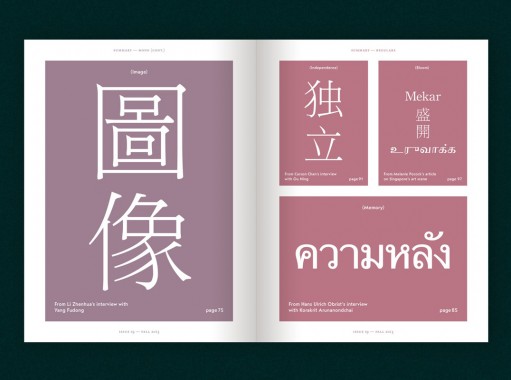
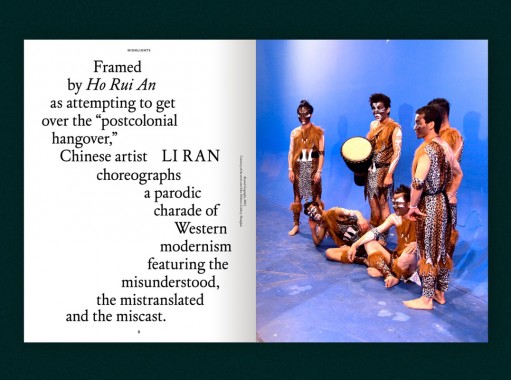
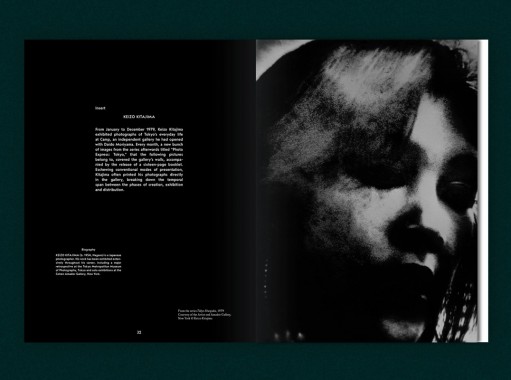
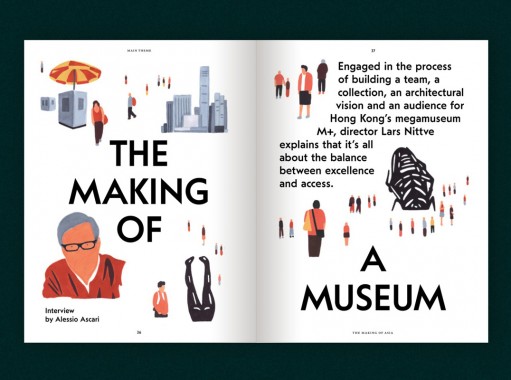
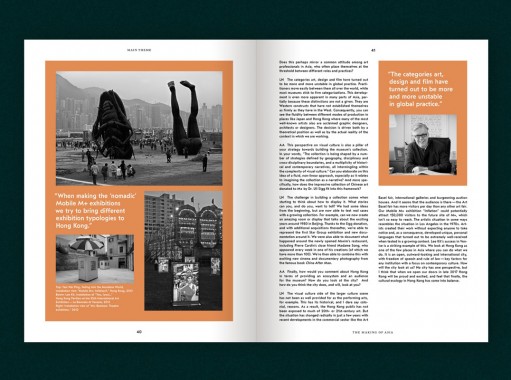
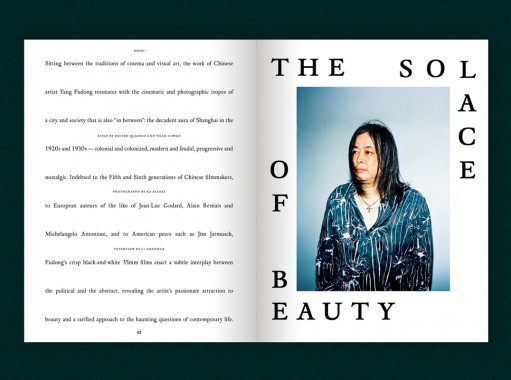
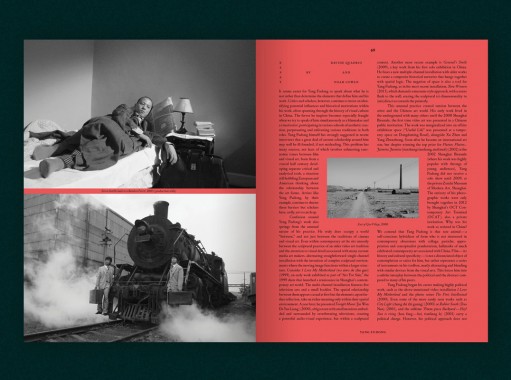
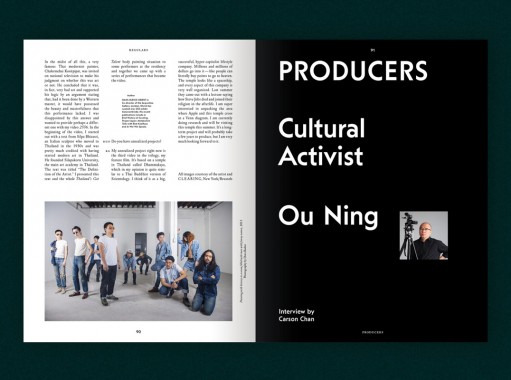
Alessio Ascari, Art, Asia, Basir Mahmood, CAMP, Cao Fei, Carson Chan, Davide Quadrio, Desire Machine Collective, Distribution, Emma Bugden, Fredi Fischli, Gary Carrion-Murayari, Gavin Wade, Gemma Sharpe, Hans Ulrich Obrist, Ho Rui An, Joselina Cruz, KALEIDOSCOPE Press, Keiichi Tanaami, Keizo Kitajima, Koki Tanaka, Korakrit Arunanondchai, Li Ran, Li Zhenhua, Maria Taniguchi, Melanie Pocock, Miwako Tezuka, Niels Olsen, Noah Cowan, Ou Ning, Pio Abad, Seung Yul Oh, Shai Heredia, The Propeller Group, Wang Xingwei, Yang Fudong
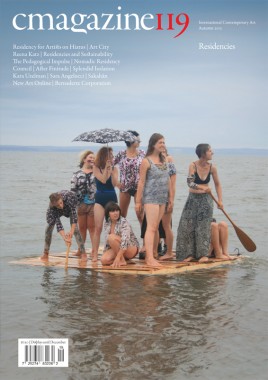
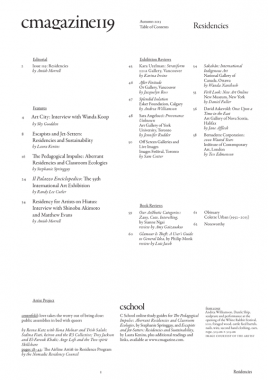
C Magazine 119, Residencies
Softcover, 64 pp., offset 4/1, 210 x 295 mm
Edition of 2200
ISSN 1480-5472
Published by C Magazine
$7.50 ·
Issue 119 includes feature essays by Laura Kenins on “Escapists and Jet-Setters: Residencies and Sustainability”, Stephanie Springgay on “The Pedagogical Impulse: Aberrant Residencies and Classroom Ecologies,” and Randy Lee Cutler on the 55th Venice Biennale, as well as Sky Goodden in conversation with Wanda Koop and an interview by Amish Morrell with Shinobu Akimoto and Matthew Evans. C119 also includes an artist project by the Nomadic Residency Council and the collaborative project “love takes the worry out of being close: public assemblies in bed with queers”; book reviews and reviews of exhibitions by Kara Uzelman, Sara Angelucci, David Askevold, Bernadette Corporation and more.
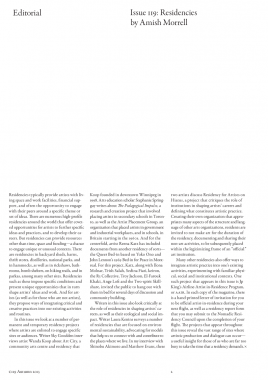
Amish Morrell, Art, Bernadette Corporation, C Magazine, Culture, David Askevold, Distribution, Fashion, Kara Uzelman, Laura Kenins, Matthew Evans, Randy Lee Cutler, Sara Angelucci, Shinobu Akimoto, Sky Goodden, Stephanie Springgay
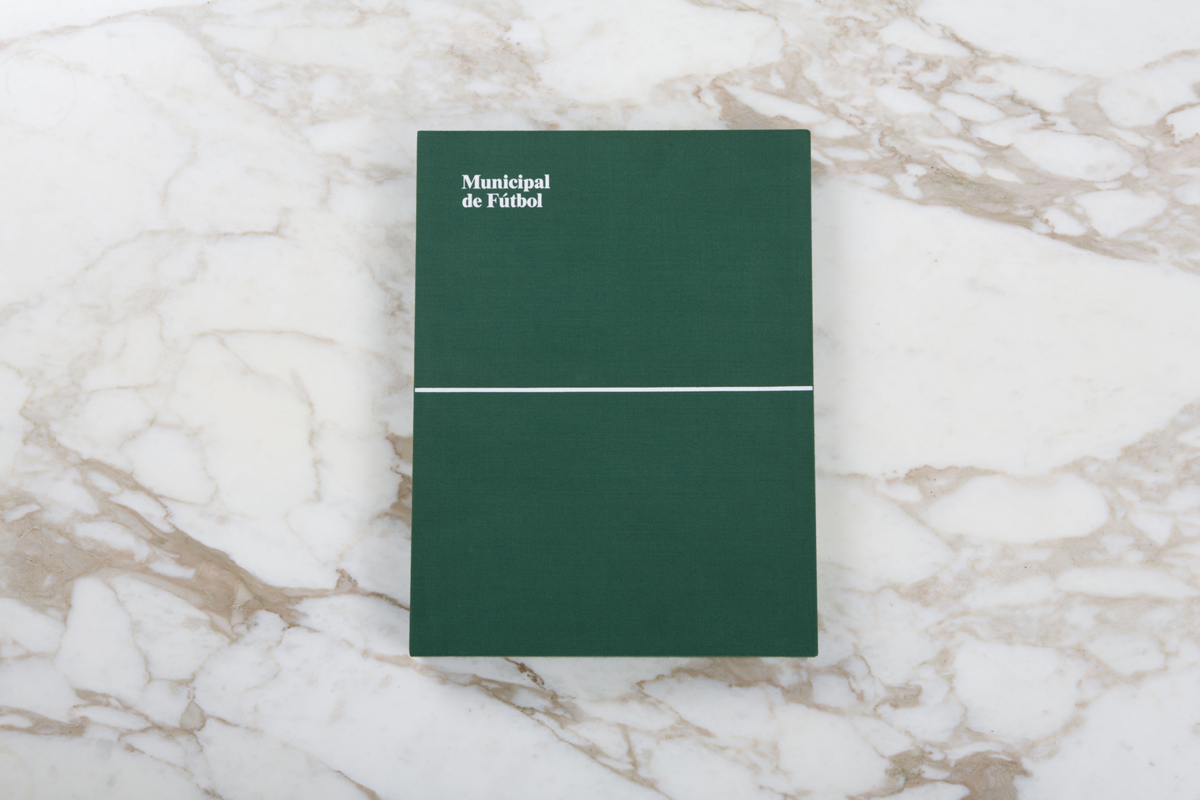
Essays by Jennifer Doyle. Photography by Michael Wells.
Municipal de Fútbol
Hardcover/boxed, 192 pp., offset 4/1, 260 x 350 x 40 mm
two books, one poster, nine artist lithographs, and a fútbol jersey, in cloth box
English and Spanish
Edition of 1000
ISBN 978-0-9816325-0-6
ISBN 978-0-9816325-1-3
ISBN 978-0-9816325-2-0
Published by Christoph Keller Editions, Textfield
$80.00 $40.00 ·
Distributed in North America by
Distributed Art Publishers
Municipal de Fútbol is a collaborative edition about amateur soccer in Los Angeles—the everyday experience of playing in pick-up games, weekend and night park leagues. Jennifer Doyle, a contributor to frieze and author of Sex Objects: Art and the Dialectics of Desire, has contributed two essays to the books, both with Spanish translation. Housed in an embossed green clothbound box with black ribbon pulls, the edition includes two clothbound books (one of which studies the game as it is played throughout Los Angeles, on hijacked baseball fields, back lots and public squares, and the other of which focuses on one field in particular, the ultra-scrappy and always animated Lafayette Park); one poster; artist lithographs by As-Found, Roderick Buchanan, Mari Eastman, General Idea, Jakob Kolding, Jonathan Monk, Arthur Ou, Peter Piller and Michael Wells; and a European National team adidas fútbol jersey with a “Municipal de Fútbol/Los Angeles Recreation and Parks” embroidered patch and a reflective silk-screened number. The edition is designed by Jonathan Maghen and photography is by Michael Wells.
“Fútbol bubbles up from the ground. It rains down on parks and leaks through walls. It rises like an irrepressible tide, and recedes only when everybody has to go earn some money for themselves and their families. Nobody playing here thinks it’s going to make them rich. Or famoso. It is what happens instead of work.” — Jennifer Doyle
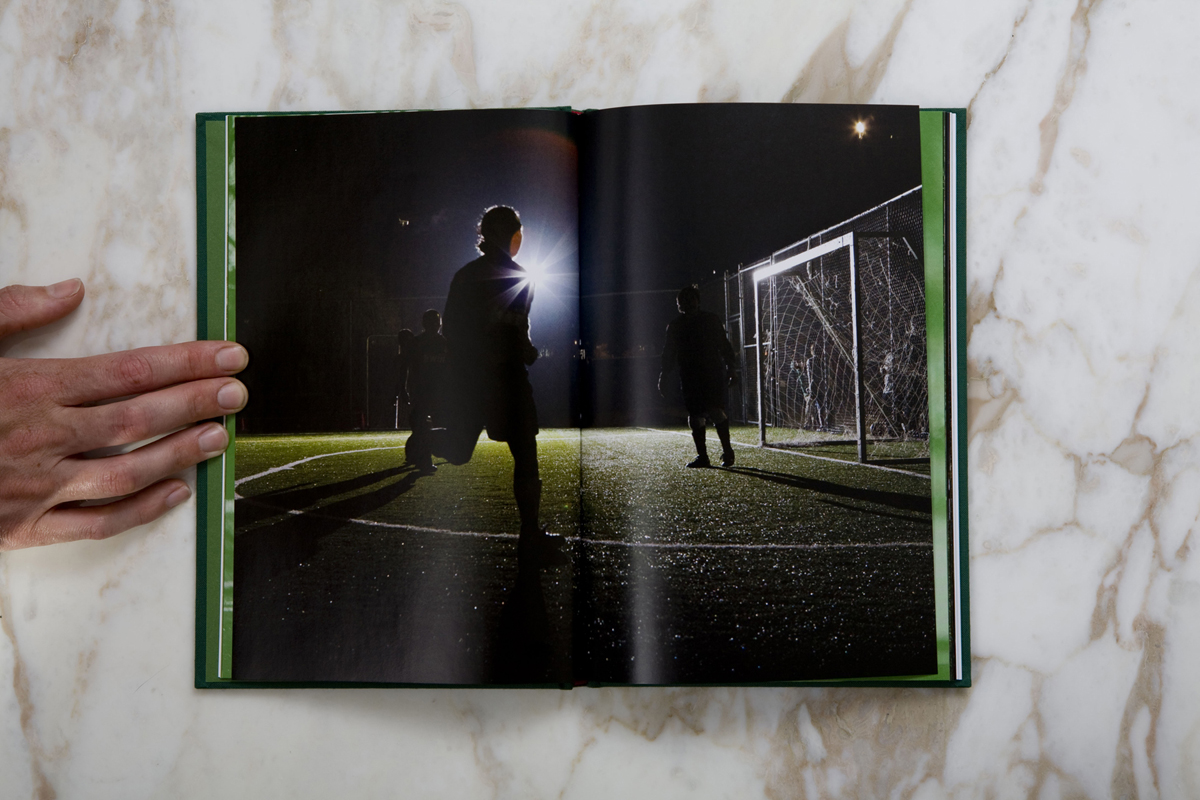
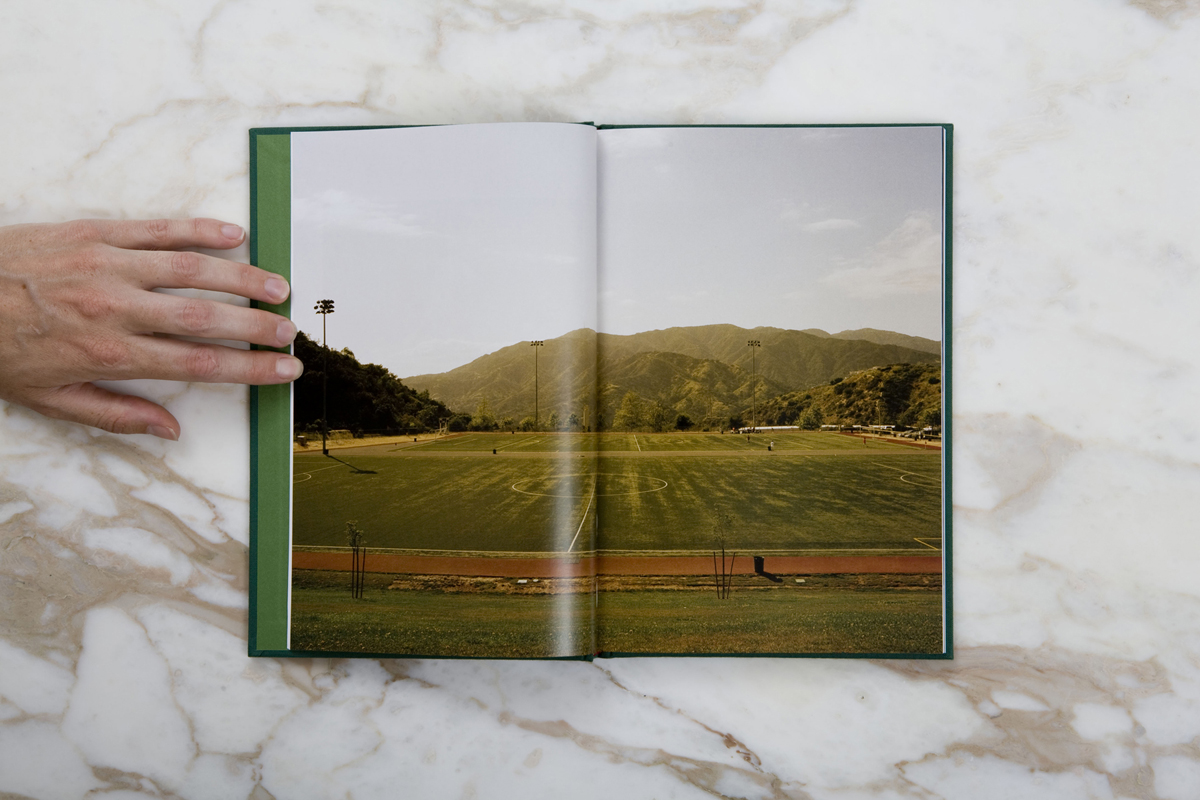
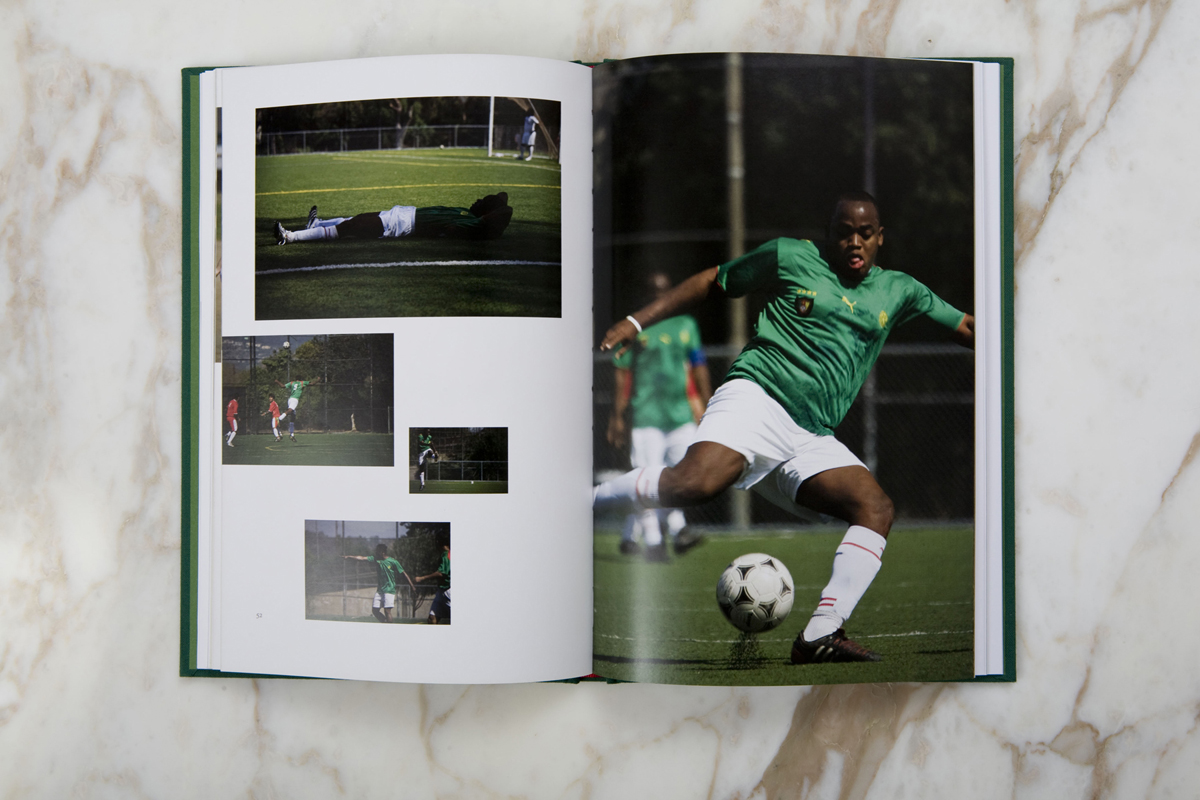
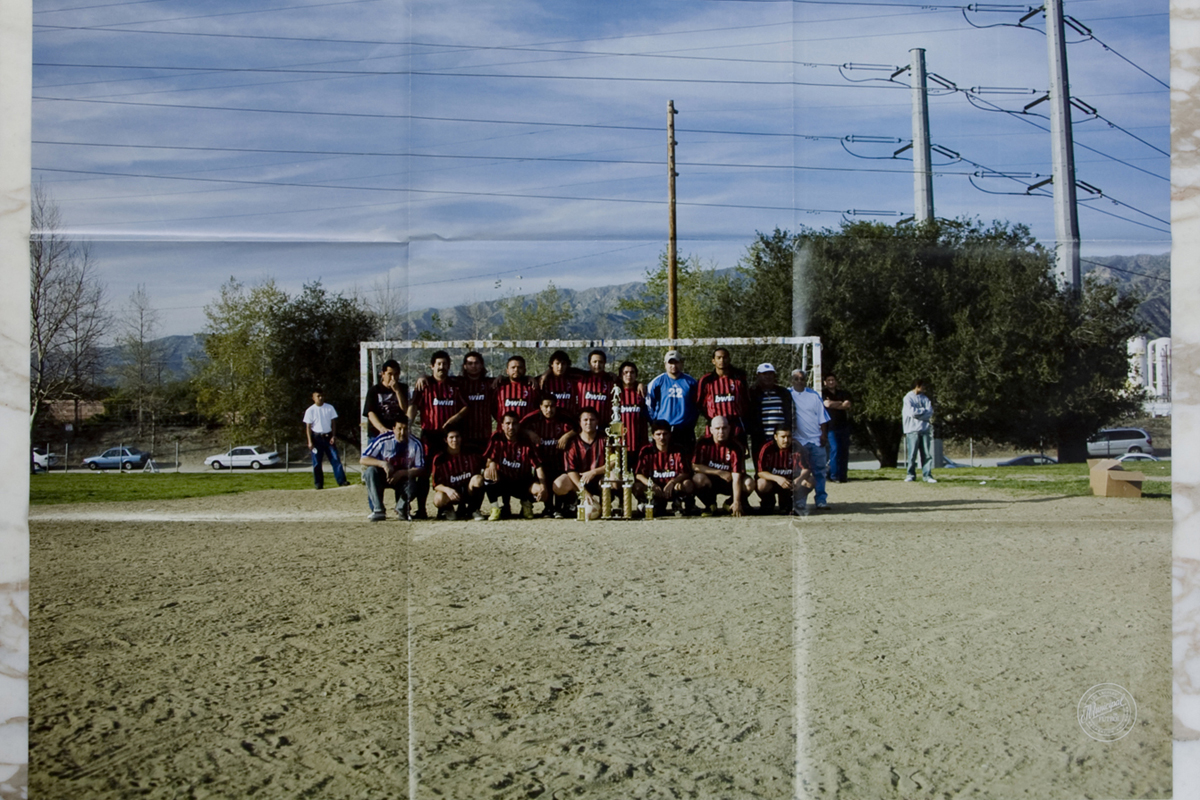
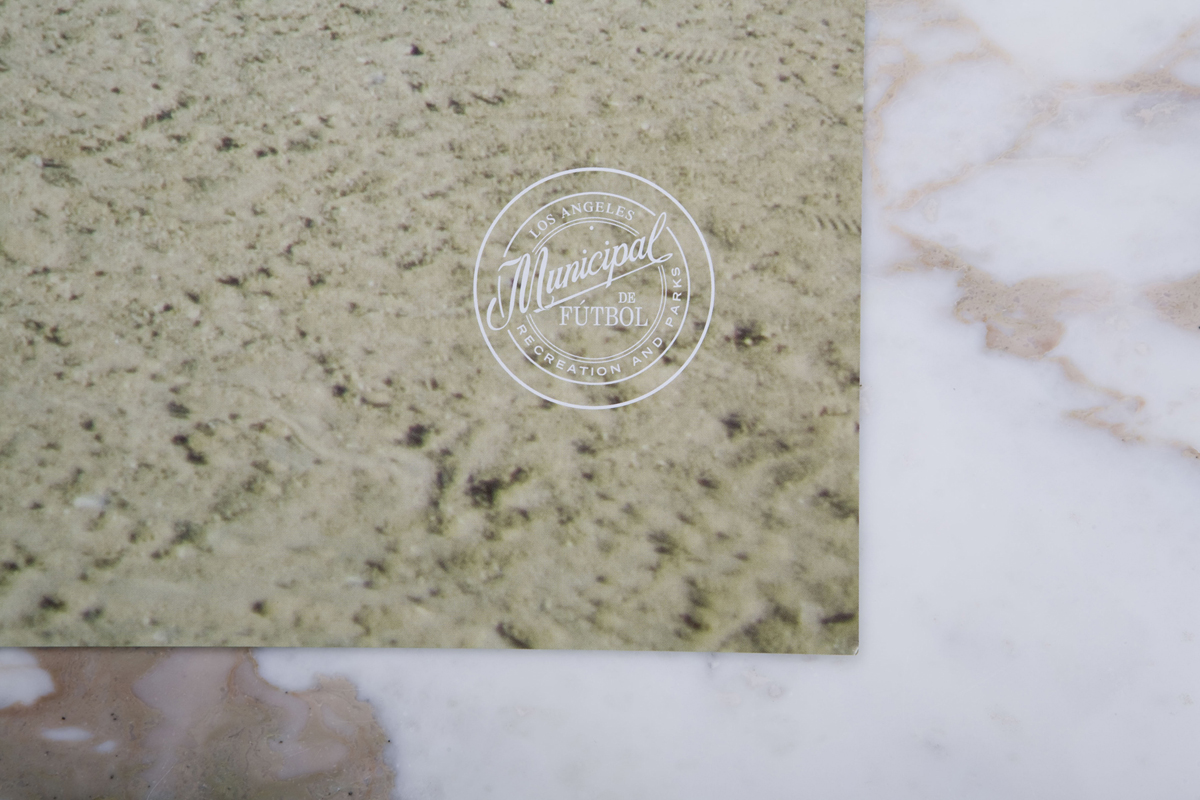
AA Bronson, Art, Arthur Ou, As-Found, Christoph Keller Editions, Criticism, Culture, DAP, Distribution, Fashion, General Idea, Jakob Kolding, Jennifer Doyle, Jonathan Maghen, Jonathan Monk, Mari Eastman, Michael Wells, Peter Piller, Roderick Buchanan, Sandy Yang, Sport, Textfield, Typography
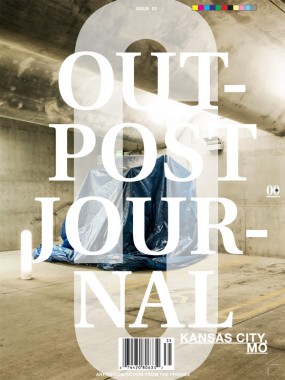
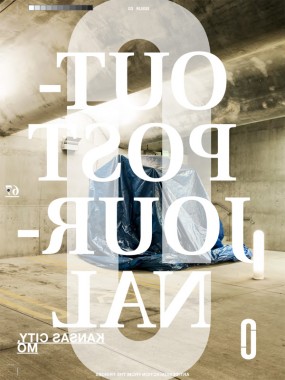
Outpost Journal 3, Kansas City
Softcover, 64 pp. + insert, offset 4/4, 9 x 12 inches
Edition of 500
ISBN 978-0-9836082-2-6
Published by Outpost Journal
$15.00 ·
Outpost is an annual print publication on art, design and community action from cities that have been traditionally underexposed beyond their local contexts. Each beautifully produced and visually engaging issue of Outpost focuses on a single urban location and comes packaged with a limited edition print by an artist from the featured city. Outpost is a journey into the creative heart of a place, and via features like “Secretly Famous” (profiles of the most infamous artsy locals), guerrilla engagements with tourist attractions, historical explorations, mapping projects, and deep dives into artist collectives and organizations, Outpost exposes the myriad ways in which unique local communities arise through creative collaboration and production.
Exploratory and playful, critical with a sense of levity, and inspired by hand-drawn maps, flags, totem poles, poorly pixelated iPhone photos, moody landscapes, and the spirit of adventure, Outpost is dedicated to strengthening ties between communities and spreading new ideas about how creative culture can change our world.
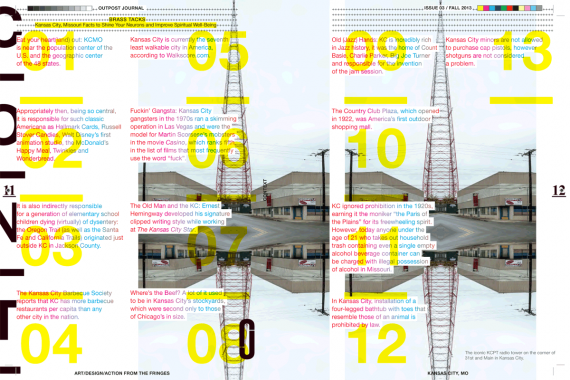
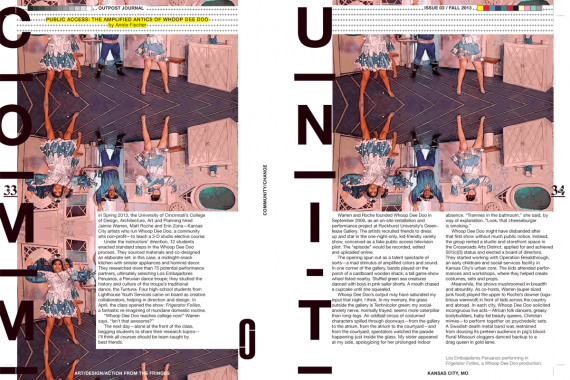
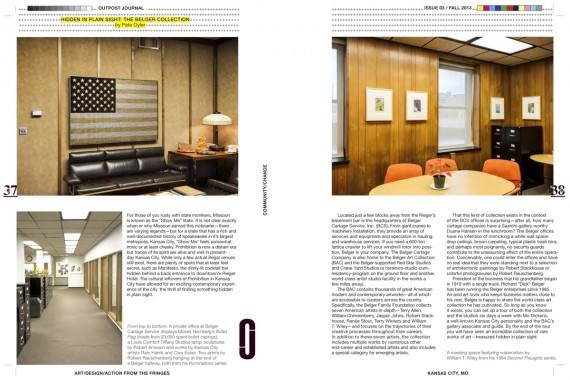
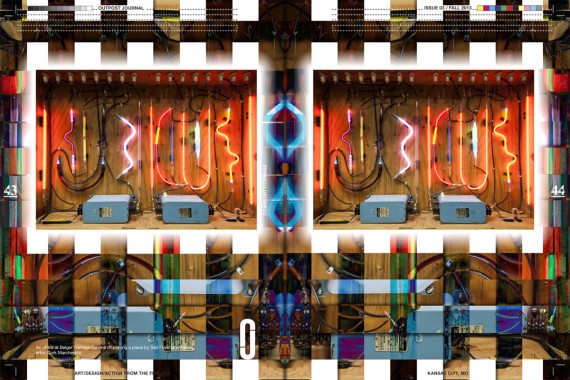
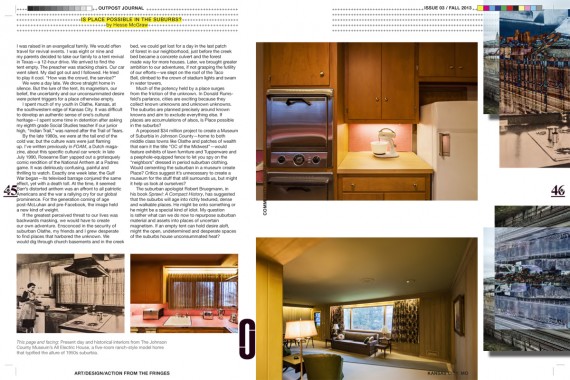
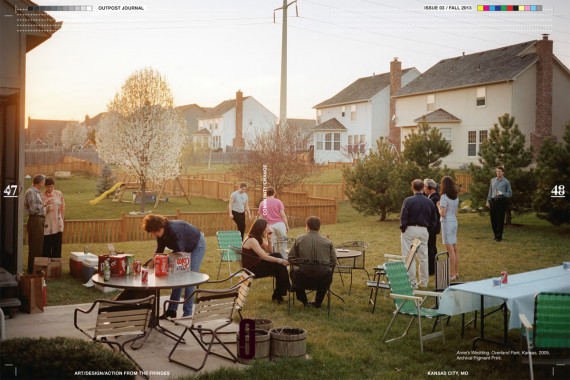
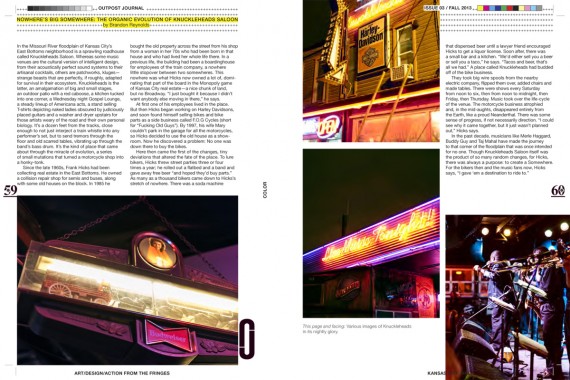
Ahram Park, Aja Blanc, Alex Kwartler, Annie Fischer, Anusha Venkataraman, Archie Scott Gobber, Architecture, Art, Brandon R. Reynolds, Clay Rockefeller, Culture, Dan Maginn, Distribution, Hesse McGraw, Jay Peter Salvas, Kate Hackman, Luke T. Baker, Manya Rubinstein, Matthew Williams, Mike Sinclair, Mike Taylor, Outpost Journal, Pete Oyler, Photography
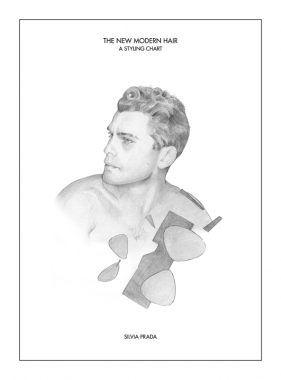
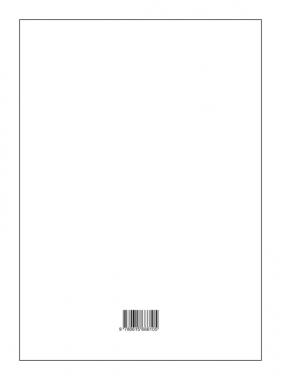
Silvia Prada, The New Modern Hair: A Styling Chart
Softcover, 32 pp., offset 1/1, 200 x 270 mm
Edition of 500, hand numbered
ISBN 978-0-615-66610-5
Published by cultureEDIT and Silvia Prada
$35.00 ·
THE NEW MODERN HAIR: A STYLING CHART features a series of stylized portraits highlighting male hairstyles juxtaposed with geometric drawings. The book pays homage to the barbershop and is an artistic representation of the subtle nuances and cues that help define the male persona, identity and representation within the parameters of visual and popular culture. Through this series of work, Prada is capturing the typecasting and idealized character building that has become ingrained in our minds through media, pop culture and iconography.
The portraits — with names ranging from The Flat Top to Executive Contour — feature commentary and meticulous instructions on how to obtain each look in order to resemble the lifestyle pictured. The geometric drawings, all whimsical remixes of 20th-century art movements such as Bauhaus, De Stijl and Russian Constructivism, highlight the emphasis on the shape for each hairstyle and command a manifesto for the references that each portrait points to.
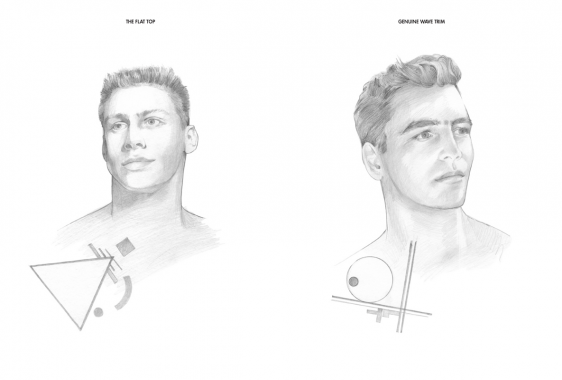
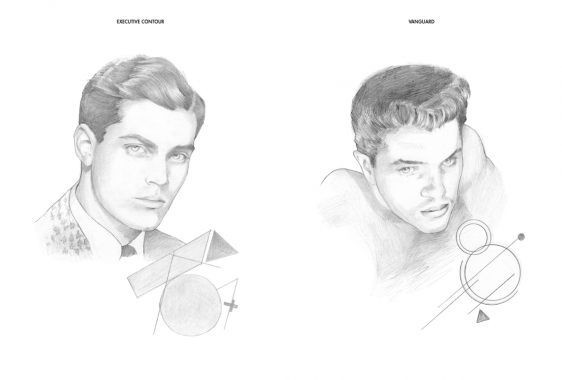
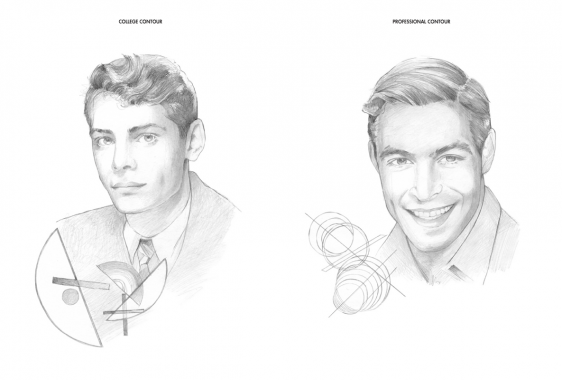
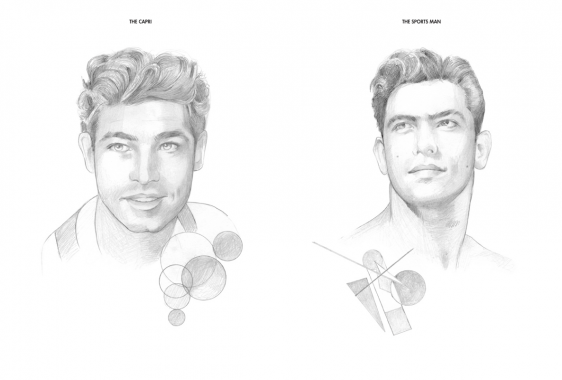
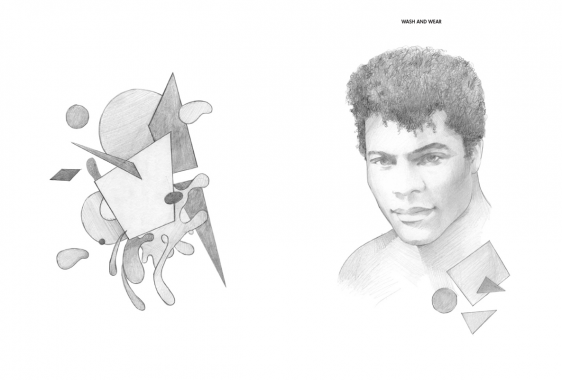
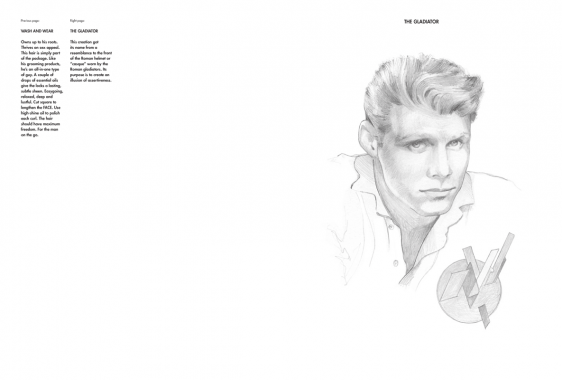
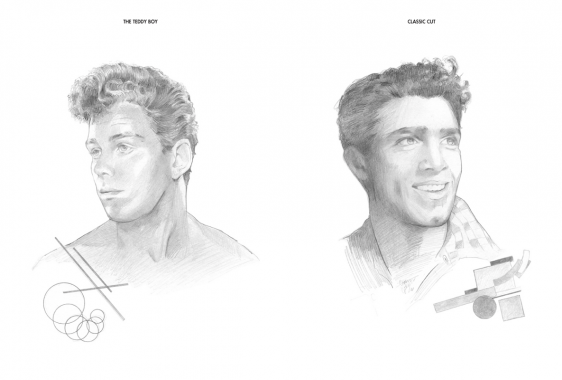
Art, Barbershop, CultureEDIT, Design, Distribution, Fashion, Holli Smith, Joakim Andreasson, Liza Kaplan, Michael Forrey, Miguel Figueroa, Setanta, Silvia Prada, Styling
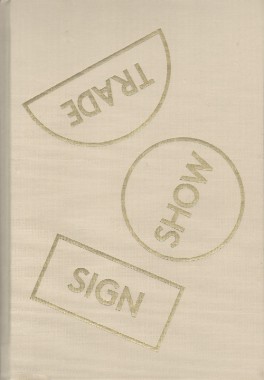
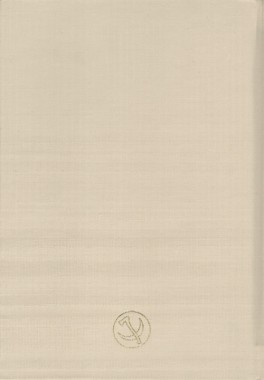
Thomas Macker, SIGN SHOW TRADE
Hardcover, 88 pp., offset 4/4, 180 x 265 mm
Edition of 500
ISBN 978-0-615-76630-0
Published by In The Pines Books
$45.00 ·
Conceptually, the publication is structured horizontally, with two formally similar series of photographic works bridged by photographs and sculptural objects that offer a dialogic counterpoint to the main series. The first group of photographs focuses around seed signs and sacks advertising distinct crop strains of genetically modified corn and soy. The individual sacks and signs are set up at the center of still life compositions, staged in the basement of Macker’s home in Jackson Hole, Wyoming. The sacks hang from the fiberglass insulation and wooden boards of the basement ceiling, while the signs are placed in gravel on the floor. The backdrops, often constructed by hanging used textiles against the gold-painted walls of the basement, offer glimpses of American nostalgia — old quilts featuring Winnie The Pooh, The Transformers, and Disney Princesses, along with faded floral sheets, tie-dye hangings, penguins. The series is presented as a calendar of images; each photograph is named for a month of the year, with an additional one for each season. The repetition in the photographs acts as a meditation on the ways we mark time, while the content of the images posits company branding as a primary signifier of cultural and personal identity: nostalgia and desire for meaning coopted by companies that alter the foundation of our sustenance.
In Macker’s work, the ‘seed’ — as altered commodity — locates the collision between the idea of the natural world as something outside and other than human, and the natural world as what we are (as animals who eat food grown from seeds, eat animals who have eaten plants grown from seeds, breathe air full of oxygen created by photosynthesis, and on and on). This space of collision and contradiction is where Macker argues we reside, and the photographic and sculptural pieces that bridge the two still life series in the exhibition offer a glimpse of the effects of that lived contradiction. Dog God | Man Camp | Big Piney, WY shows a coyote impaled by a pole and posed with its head up (as if howling), a scene Macker found and documented next to one of the “Man Camps” of trailers that have sprung up throughout the Gaslands of Wyoming, the Dakotas, Colorado and Iowa to house temporary gas line workers. Another shows the snow-filled landscape where Matthew Shephard was beaten and killed, the only marker of that moment of cultural mourning and instigator of progressive action now a gas company pole. Bumper stickers Macker stole from trucks in Wyoming and printed onto vintage glass tiles depict bikini-clad women alongside text that reads ‘Just Frack It’, and, a digitally rendered bust of a disembodied pregnant torso hangs next to a digitally rendered image of a Molatov cocktail. Reproduction, destruction, re-birth, identity, and verbal and physical languages of dominance comingle with cultural hope and yearning — a yearning that always seems to leave violence in its wake.
In the second still life series, the seed signs have been replaced by gas company signage. These signs, stolen by Macker during drives across the Gaslands, functioned as markers for the temporary roadways that crisscross the landscape where gas lines are in construction. In this series, the signs rest on top of a wooden crate instead of being placed in gravel, and the backdrop is now constructed of brown carpet. In front of the carpet, Macker has hung reproductions of 19th and 20th century artwork mythologizing woodcutters. Behind a Unit Drilling Company sign directing us towards Rig 24, we see Winslow Homer’s The Woodcutter, here featured on a living room wall as part of an interior design advertisement. In Der Holzfäller, Ferdinand Hodler, 1910, a Danger Benzene Cancer Hazard sign accompanied by a potted plant stands in front of Ferdinand Hodler’s Der Holzfäller. Co-opting these already-reproduced artworks, Macker highlights the historic glorification of human dominance over nature, as well as the problematic placement of the artist within this glorification, as a symbol and actor of these same problematic humanist ideals. The scenes are constructed to be visually satisfying, uncomfortable, humorous, claustrophobic, and unexpectedly personal, reflecting our continued desire to feel communal pride in our accomplishments, as well as the consequences of a system in which the structure for expansion we have created necessitates an unwillingness to recognize the fallibility or responsibility of power.
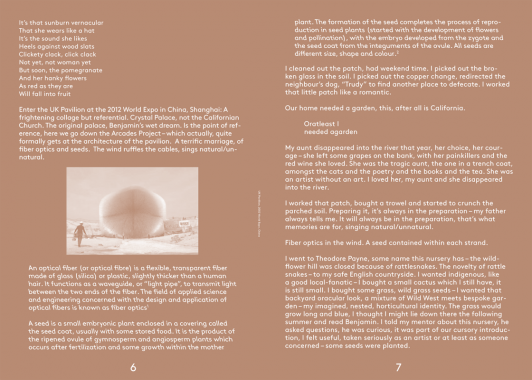
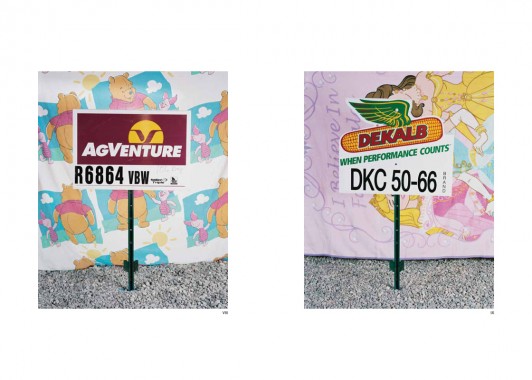
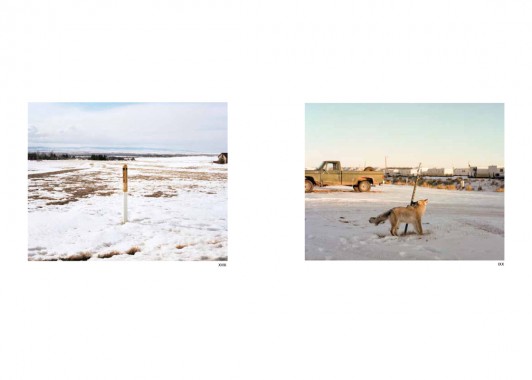
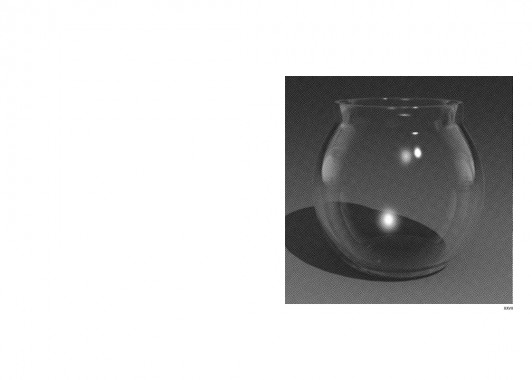
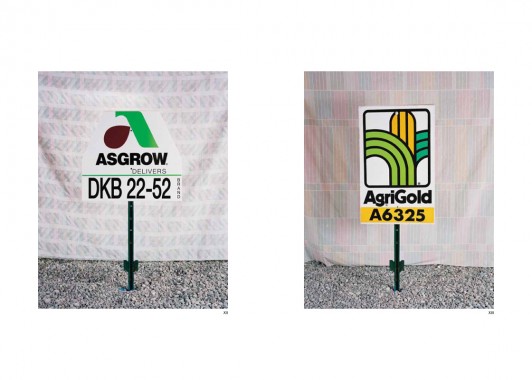
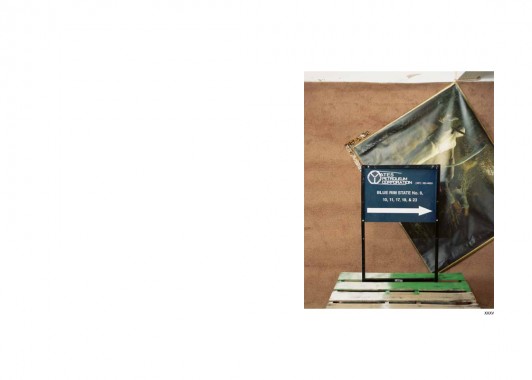
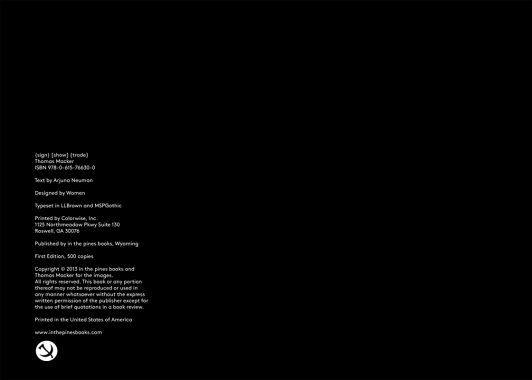
Agriculture, Art, Corn, Distribution, Ferdinand Hodler, Fracking, GMOs, Halliburton, In The Pines Books, Jackson Hole, LL Brown, Monsanto, Oil, Photography, Soy, Thomas Macker, Wyoming


























































































